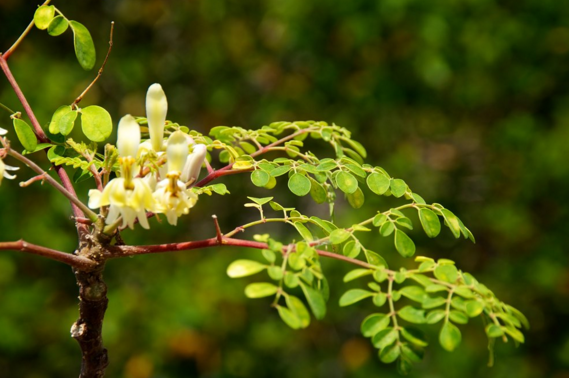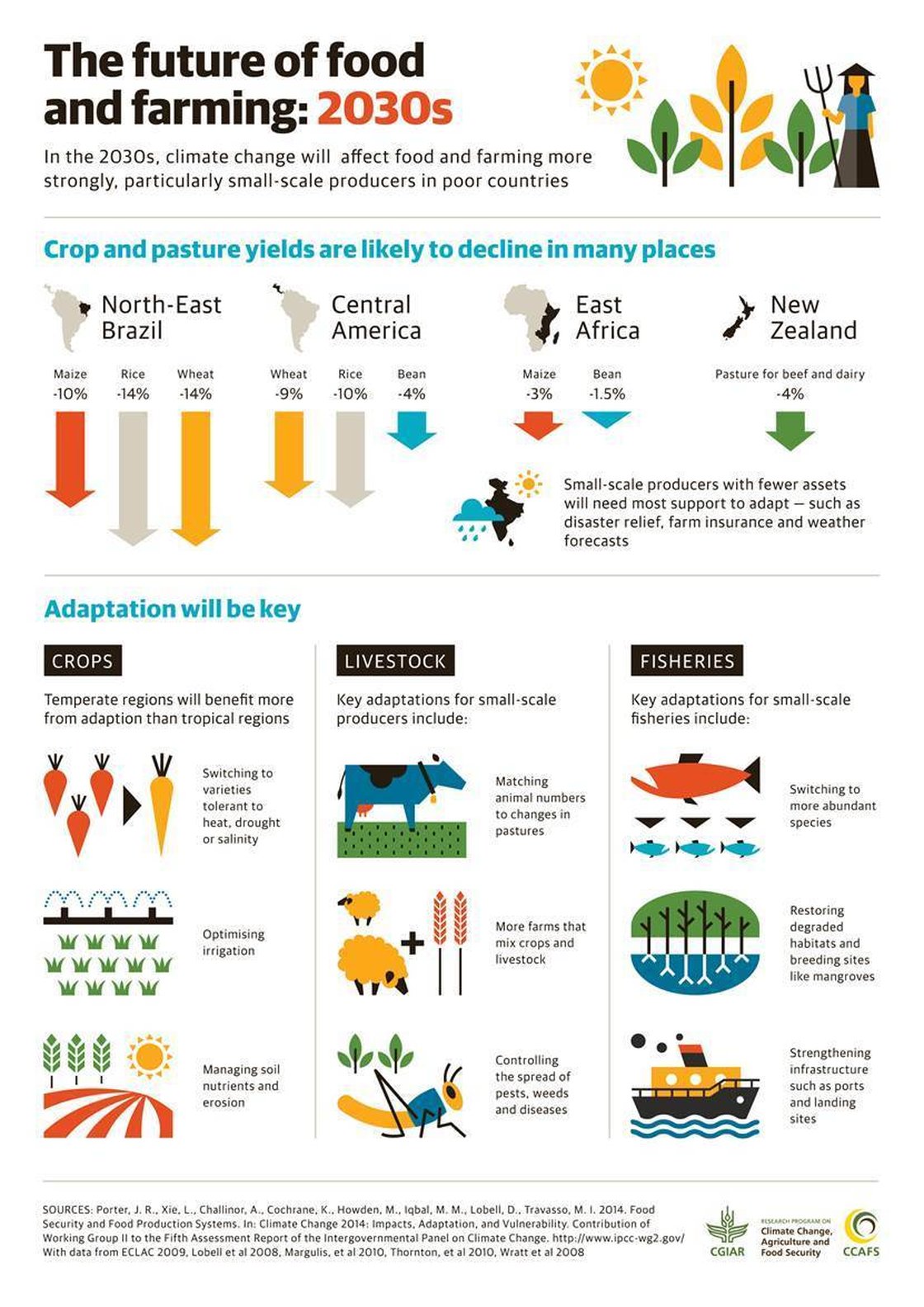
On March 31, 2014, the Intergovernmental Panel on Climate Change (IPCC) released a report detailing the impacts of global climate change over the next forty years. The Consultative Group on International Agricultural Research (CGIAR), published the following infographics which outline the effects of global climate change on agriculture and food production.

Drought Resistant Crops
Both infographics highlight the importance of drought-resistant crops, including moringa, as global temperatures increase and crop yields decrease.
Moringa oleifera is a small leafy tree whose dried leaves are incorporated into Kuli Kuli products. Moringa grows best in hot, semi-arid tropics. It is drought-tolerant and grows with rainfalls of 250-1500mm per year” (1). In addition to its ability to tolerate hot and dry conditions, moringa can thrive in alkaline soils and can grow up to 15 feet in a single year (1).
Without a doubt, global climate change will force farmers and the global community to think differently. We will need to make changes to the food we grow and adapt accordingly. As such, it is exceedingly important that we identify and normalize the use of highly adaptable crops. This includes growing more crops like Moringa oleifera, within the United States and across the globe.







